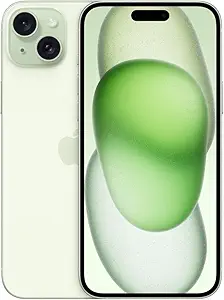
Refurbished Smartphones Fight E-Waste
Each year, International E-Waste Day is held on 14 October, an opportunity to reflect on the impacts of e-waste and the necessary actions to enhance circularity for e-products. According to WEEE, more than 24.5 million tons of small e-waste (consumer electronics) were produced worldwide in 2019, accounting for 40% of all e-waste around the world. refurbished smartphones
The organization estimates that in 2022 around 5.3 billion mobile phones will become e-waste – an estimate that appears to be based on the cumulative new phone sales from the prior three years and an assumption that since the average phone is replaced every three years (actually closer to four years now) they’ll all end up in the dump or stashed in closets or the back of drawers.
All is not as bad as that, though. More and more people are turning in their old phones when they upgrade to a new one. And many of those phones are being refurbished or recycled. Strategy Analytics estimates that 75% of all phones turned in can be refurbished (though it may not always be economical to do so, given considerations such as the age of the device and damage to it). Those that are not able to be refurbished can be recycled, which allows for the retrieval of important metals like copper, gold, silver and other materials. Importantly, those parts that are recycled don’t end up in the landfill, and instead, potentially end up in new smartphones.
Refurbished smartphones are the sharp end of the stick. These devices, rather than being torn down, can be repaired and see a second life with a new user. Strategy Analytics estimates more than a quarter billion refurbished smartphones will be sold worldwide in 2022. This is up from just a couple of years ago, when just 200 million were sold. And looking forward, we estimate the number will grow to 400 million before the end of the decade.
Refurbished smartphones
Demand for refurbished smartphones is growing in just about every part of the world. Economic conditions are one driver of refurbished smartphone sales. With inflation and energy and food prices skyrocketing, more consumers (and some employers) are looking to buy refurbished as a more affordable way to replace their current, older smartphones. And as the price of premium smartphones continues to steadily increase, many consumers are looking to upgrade to a better smartphone by buying a refurbished one rather than a new one.
The industry is taking note. Major smartphone OEMs like Samsung and Apple have programs to refurbish and make available certified refurbished devices. Operators are taking in old devices in exchange when they sell new ones, and then working with the industry to refurbish those devices. Some operators, like Orange, are making these devices available to their customers.
Refurbished smartphones are increasingly regarded as a smart choice by consumers, both helping their pocketbooks and the environment. Younger consumers are particularly interested in refurbished smartphones. There is a huge opportunity here for the smartphone industry to meet consumer demand, help the environment, and build relationships with customers that will keep them returning. Refurbished phones are a win-win-win for everyone.
e-waste in Europe
In Europe, up to 1.4 kg of e-waste per inhabitant ends up in the general waste bin every year. On top of this, small appliances are easily stored and forgotten about in drawers, cupboards, garages, basements, and attics. In an average European household, up to 5 kg of e-devices per person is currently hoarded. It is crucial that people become more aware of this issue and that the loss of the important resources these items contain is stopped.










